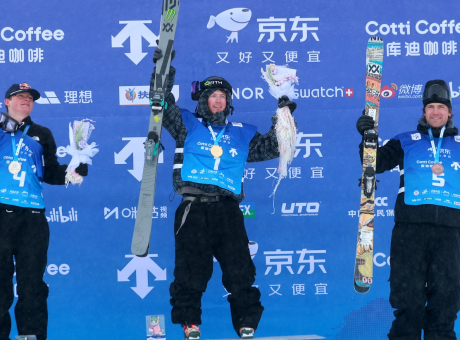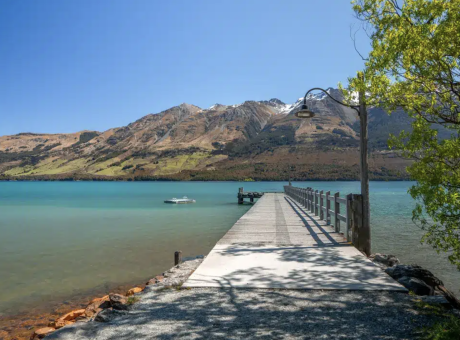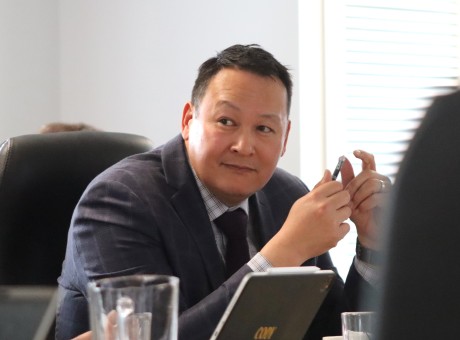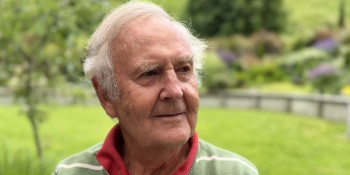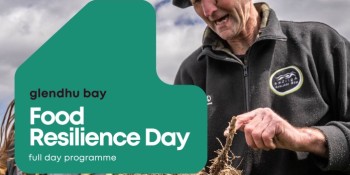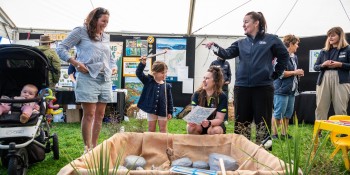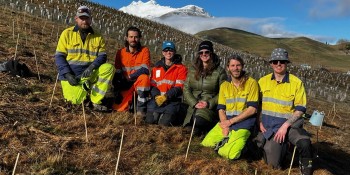Boat builder reveals future of passenger transport on Southern Lakes

A New Zealand-based boat builder has this morning revealed what could be a glimpse into the future of passenger transport on Queenstown, Wānaka, and Cromwell's lakes.
They've designed America's Cup boats and now Vessev is turning to ferries, teaming up with Fullers360, New Zealand's largest ferry operator to deliver the VS-9 - set to be the first fully electric passenger vessel to operate in Auckland and the first hydrofoiling tourism vessel to operate in the world.
While the company's announcement today is Auckland-focused, chief executive Eric Laakmann says boats like the VS-9 are the perfect solution for the southern lakes both for tourism and to relief congestion, particularly in Queenstown.
"Water taxis for example are often cancelled due to adverse condition. The VS-9 - and it's larger upcoming siblings - sit on top of the waves, enabling a smooth ride even when the wind is up."
Mr Laakmann says the company has local knowledge about weather and water conditions.
"These are vessels made in New Zealand for New Zealand.
"We know what it can be like from a wind standpoint on (the South Island's) lakes and we have designed with that in mind."
The VS-9 is currently being trialled at sea from Auckland, with the first vessel flagged for certification this year, before entering commercial operation with Fullers360 after that.
Mike Horne, Fullers360 chief executive, says he's working towards all his fleet being electric or hydrogen operated by 2040.
He thinks Auckland is "quickly becoming a case study for the adoption of green technology".
"The VS-9 combines the first fully electric passenger vessel to operate in Auckland with the latest hydrofoiling technology to deliver premium tourism experiences.
"Our understanding is there are currently no electric hydrofoiling vessels certified for commercial tourism use in the world and the testing done here in New Zealand will set a new standard for bringing this new class of vessel into service globally."
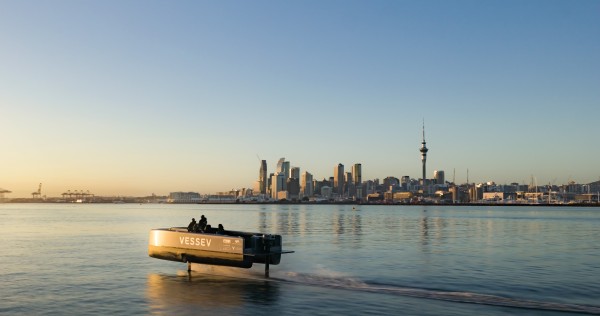
A NZ-based boat builder is trialling a small, fully electric, hydrofoiling vessel in Auckland (Image: Supplied/Vessev).
The VS-9 is nine metres long, and can transport up to 10 passengers at a service speed of 25 knots, with a range of 50 nautical miles (92.6 kilometres).
Work is already underway to upscale the VS-9 technology for larger boats - including the VS-18, a 100-passenger vessel.
The boat builders claim the experience on board feels more like flying than sailing.
Mr Laakmann says traditionally passenger ferries have had to be larger to handle the impacts of waves and wake and deliver a comfortable passenger experience.
"By flying above the waves the VS-9 delivers a large vessel experience on an agile platform that can be berthed and charged in nearly any marina.
It is his view its development and commercialisation "will enable thousands of new routes around the world that are currently impractical for traditional vessel".
When it comes to cost, Mr Laakmann argues the ferries will be cheaper to maintain and fuel, meaning their lifetime cost will be "substantially less than comparable fossil fuel vehicles".
He's been putting it to the test in the Auckland sea trials, where a petrol-powered chase boat is following the VS-9, doing the same motions and distance.
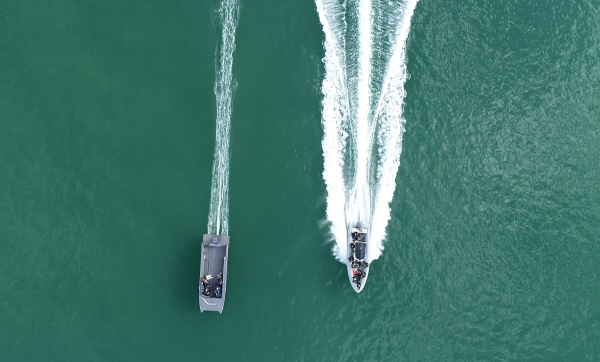
Comparing wakes in Auckland sea trials - a petrol-powered chase boat is following the VS-9, doing the same motions and distance (Image: Supplied/Vessev).
"At the end of each day, the cost of the petrol fuelling the chase boat is 25 times the cost of the electricity used to charge the VS-9."
Mr Laakmann says the boat is "so efficient" it can be charged using existing electric charging infrastructure commonly available in most marina - and, once highspeed DC charging is in place, recharge times will be up to 0.8 nautical miles of range per minute of charging.
"Our objective is to break down the barriers to adopting electric vessels. From the outset, our goal was to design a commercial electric vessel that can use the charging capacity already available in many marinas to run serious commercial businesses.
"Through a combination of size and efficiency, we have succeeded with the VS-9. During sea-trials we have been running up to three test sessions a day using a standard AC 3-phase connection.
"We think that operators and tourism businesses around the world will see the benefit in that."
Mr Laakmann says the company is planning to bring one of the first VS-9s to the South Island next year.
"The good news is that residents of South Island won't have to wait long."
Main image (Supplied/Vessev): The interior of the VS-9, as imagined on a southern lake.





